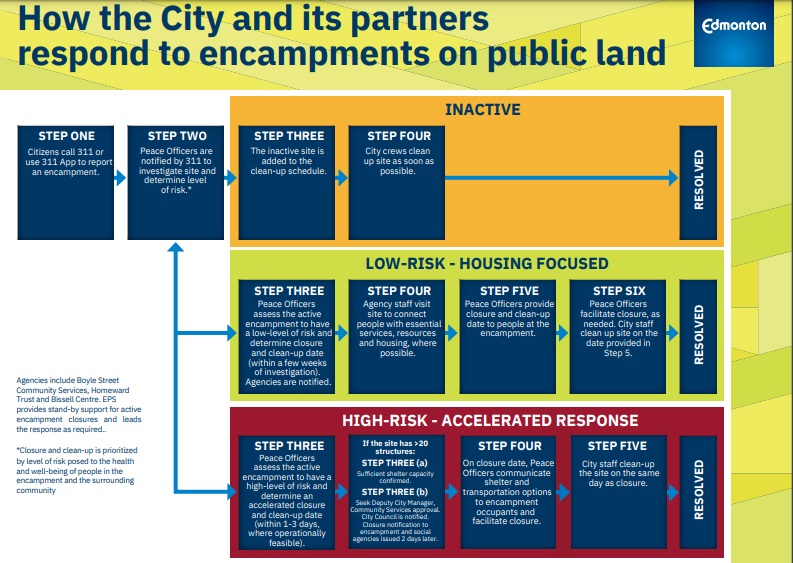Edmonton
Help build the North Saskatchewan Regional Plan

March 07, 2018
Albertans are invited to provide their input on how land in the North Saskatchewan Region will be used and managed.
Public feedback will help the Alberta government develop the final North Saskatchewan Regional Plan (NSRP), which will ensure government policies guide natural resource development, support local economic growth, enhance recreation opportunities, respect traditional Indigenous land use and protect the environment.
“The North Saskatchewan Region is home to about 1.5 million Albertans, as well as Alberta’s Industrial Heartland, some of the best farmland in the world, foothills and mountains with immense recreation opportunities, and prized headwaters that supply drinking water to many communities. It is important that Albertans are engaged in building a plan for the region that is good for the environment, good for the economy and good for Albertans.”
Shannon Phillips, Minister of Environment and Parks
NSRP will be the third regional plan developed under Alberta’s Land-use Framework.
To help develop the draft plan, a regional advisory council made up of 27 Albertans was appointed in 2014 to provide independent, strategic advice, analysis and options to government. The council provided 69 recommendations to government in six topic areas.
Council recommendation areas
- Managing wetlands and lakes as part of watershed management.
- Supporting biodiversity in the region.
- Inclusion of Indigenous peoples in land-use planning.
- Community growth and community land-use planning.
- Management of outdoor recreation.
- Economic development.
The council’s report and recommendations provide important perspectives for Albertans to consider. The government encourages all interested parties, including Indigenous communities, stakeholders and the public, to provide their input and ideas for development of this plan.
The consultation period runs from March 7 to May 4, 2018. To read the North Saskatchewan Regional Advisory Council’s recommendations and provide feedback online, please visit: https://www.landuse.alberta.ca.
Quick facts
- The North Saskatchewan Region covers about 85,780 square kilometres of central Alberta – 13 per cent of the total land base of Alberta.
- About 38 per cent of the provincial population of four million people lives in the region.
- The North Saskatchewan Region is home to prized headwaters that supply the drinking water to the City of Edmonton and surrounding communities, such as Red Deer.
- Banff is included in the North Saskatchewan Region to ensure that the key headwaters for the region are within the geographical boundary. The regional boundaries were based on major watersheds and adjusted to align with municipal boundaries.
- Rapid population growth in the North Saskatchewan Region, particularly in the Capital Region, has created pressures on regional transportation routes and recreation areas.
- From 2000 to 2013, the North Saskatchewan Region observed a 3.1 per cent annual growth rate in GDP, largely due to the Capital Region becoming a dispatch hub for goods shipped south to export markets or north for further natural resource development.
Related information
Alberta
Male suspect involved in tragic incident between Beaumont and Edmonton sought by police; EPS release photos of suspect

News release from the Edmonton Police Service (EPS)
The Edmonton Police Service (EPS) is assisting the RCMP with the investigation into a tragic incident that claimed the life of an innocent woman last night on 50 Street.
Yesterday, Saturday, Feb. 24, 2024, at approximately 9:40 p.m. various EPS resources were deployed to the area of 50 Street and 22 Avenue SW at the request of the RCMP. It was reported to police that RCMP attempted to conduct a traffic stop on a suspicious U-Haul in Beaumont, when the vehicle fled. The U-Haul subsequently travelled north on 50 Street into Edmonton, where it struck and killed a woman inspecting the exterior of her vehicle. Moments later the U-Haul came to rest just outside a gas station off of 22 Avenue and 50 Street.
After crashing the U-Haul, the male suspect then reportedly stole a Honda Civic that was parked outside the gas station with a child inside. Police did consider an Alert to the public at the time, though thankfully the child was located unharmed in the area of 66 Street and 25 Avenue minutes later. The suspect then fled the scene in the Honda Civic. The stolen vehicle has since been recovered outside of Edmonton.
The EPS and RCMP continue to actively seek the identity and whereabouts of the male suspect described as being approximately 5’11” who was last seen wearing a black hoodie with white text on the front, brown shorts and black shoes. CCTV photos of the suspect are included below.
“We are incredibly saddened to hear about the tragic death of the innocent woman who was killed on 50 Street,” says Det. Nigel Phillips with the EPS Investigative Response Team. “Our hearts are with her family and friends who will now have to carry on with this unfathomable loss.”
“We are doing everything we can to track down the suspect and we trust the public will help us identify and locate him as soon as possible.”

Assist to identify and locate: Male suspect running in area of 50 Street & 22 Avenue SW
Anyone with information about the suspect’s identity and/or their whereabouts is asked to contact the EPS immediately at 780-423-4567 or #377 from a mobile phone. Anonymous information can also be submitted to Crime Stoppers at 1-800-222-8477 or online at www.p3tips.com/250.
City of Edmonton
City of Edmonton defends response to homeless encampments

Edmonton homeless encampment from 2022 (Photo: Alexander Shamota, Alberta Views Magazine).
News release from the City of Edmonton
Overview of the City of Edmonton’s information in Court about its response to homeless encampments
- While numbers of shelter beds and unhoused persons vary from day to day, Edmonton’s shelters have had excess capacity throughout 2023, with even more capacity available in 2024. In periods of extreme demand, capacity can be scaled upwards immediately. A person seeking indoor shelter in Edmonton will never be left without an indoor place to shelter.
- Edmonton’s shelter system supports and accommodates persons with diverse backgrounds and lived experiences, including persons who use drugs, all genders and sexualities, all religions, couples, and persons with disabilities. Edmonton has Indigenous-led shelter spaces, women-only spaces, and specialized shelter programming for Indigenous persons who have experienced trauma.
- Outdoor sheltering poses severe dangers to the unhoused. Evidence will be presented of examples of gang victimization, armed robbery, physical and sexual assault, sexual exploitation, sanitation issues leading to disease, frostbite and cold-weather injuries, and fatalities caused by tent and encampment fires. These risks will be shown to be attributable to outdoor sheltering, not the removal of encampments.
- In the last five years, Edmonton Fire Rescue Services has reported at least seven deaths and 26 injuries from 276 fires that could be attributed to tents or encampments. This number is likely a significant underestimate due to the challenges inherent in investigating these types of fires.
- Expert medical evidence from Alberta’s former Chief Medical Officer of Health will be presented showing that encampments increase potential communicable disease transmission and fire- and violence-related injuries when compared with emergency shelters.
- Encampments can pose a danger to the community at large. Evidence will be presented of violence arising from encampments, accumulations of human feces, biohazardous waste, weapons and drug paraphernalia surrounding encampments, uncontrolled fires and propane cylinder explosions, and examples of wildfires starting at encampments in Edmonton’s natural areas.
- The number of complaints from members of the public has significantly risen over the last number of years. Between January 1, 2023 and October 22, 2023, there were 13,683 complaints from concerned Edmontonians.
- Encampment closures are evaluated on a risk matrix. This is an attempt to respond to community concerns, ongoing damage to the environment and infrastructure, as well as the inherent dangers in outdoor encampments. When camps are first assessed and again when closed, offers are made to take individuals to a shelter. As well, during the encampment closure process, opportunities are provided for individuals to connect with various community organizations supporting the unhoused.
- Evidence will be presented on the impacts associated with Camp Pekiwewin (2020). The City has been provided evidence of physical and sexual violence, gang violence, sex trafficking, sanitation and biological health hazards for occupants of Camp Pekiwiwin. Evidence provided by residents of the Rossdale community shares examples of violence and physical assault, theft of property, residents leaving the community for their own safety, vandalism, fire, and significant River Valley damage due to firewood cutting by encampment occupants.
-

 Health2 days ago
Health2 days agoTransgender activists are threatening the author of scathing UK report on child ‘sex changes’
-

 conflict2 days ago
conflict2 days agoCol. Douglas Macgregor torches Trump over support for bill funding wars in Ukraine and Israel
-

 Frontier Centre for Public Policy2 days ago
Frontier Centre for Public Policy2 days agoThe end of Canada: The shift from democracy to totalitarian behavior in the ‘pandemic era’
-

 International2 days ago
International2 days agoBiden admin expands Title IX to include ‘gender identity,’ sparking conservative backlash
-

 Alberta2 days ago
Alberta2 days agoAlberta’s baby name superstar steals the show again
-

 Business23 hours ago
Business23 hours agoDon’t be fooled by high-speed rail
-

 Alberta23 hours ago
Alberta23 hours agoActivity-Based Hospital Funding in Alberta: Insights from Quebec and Australia
-

 Business21 hours ago
Business21 hours agoUN plastics plans are unscientific and unrealistic







